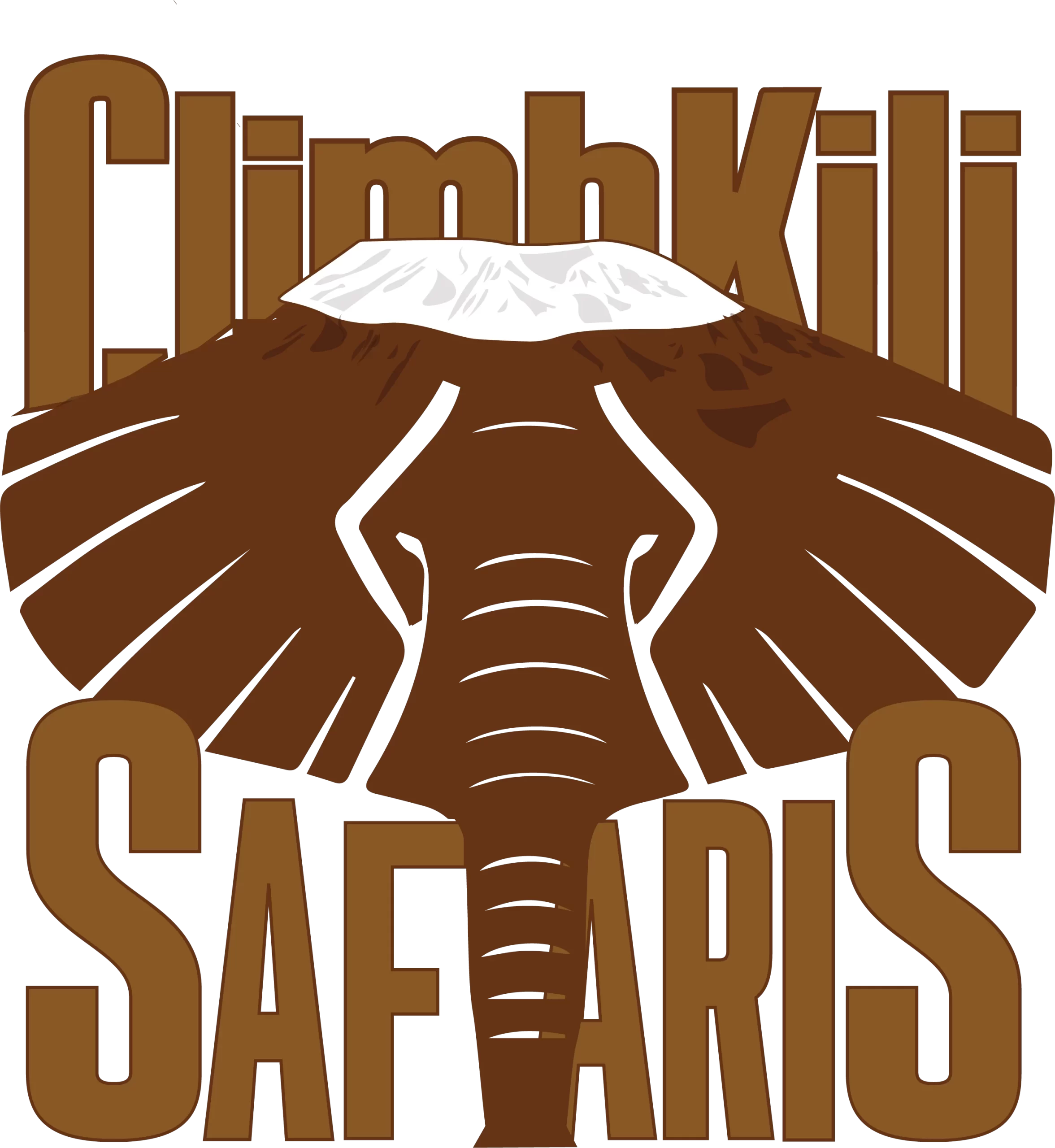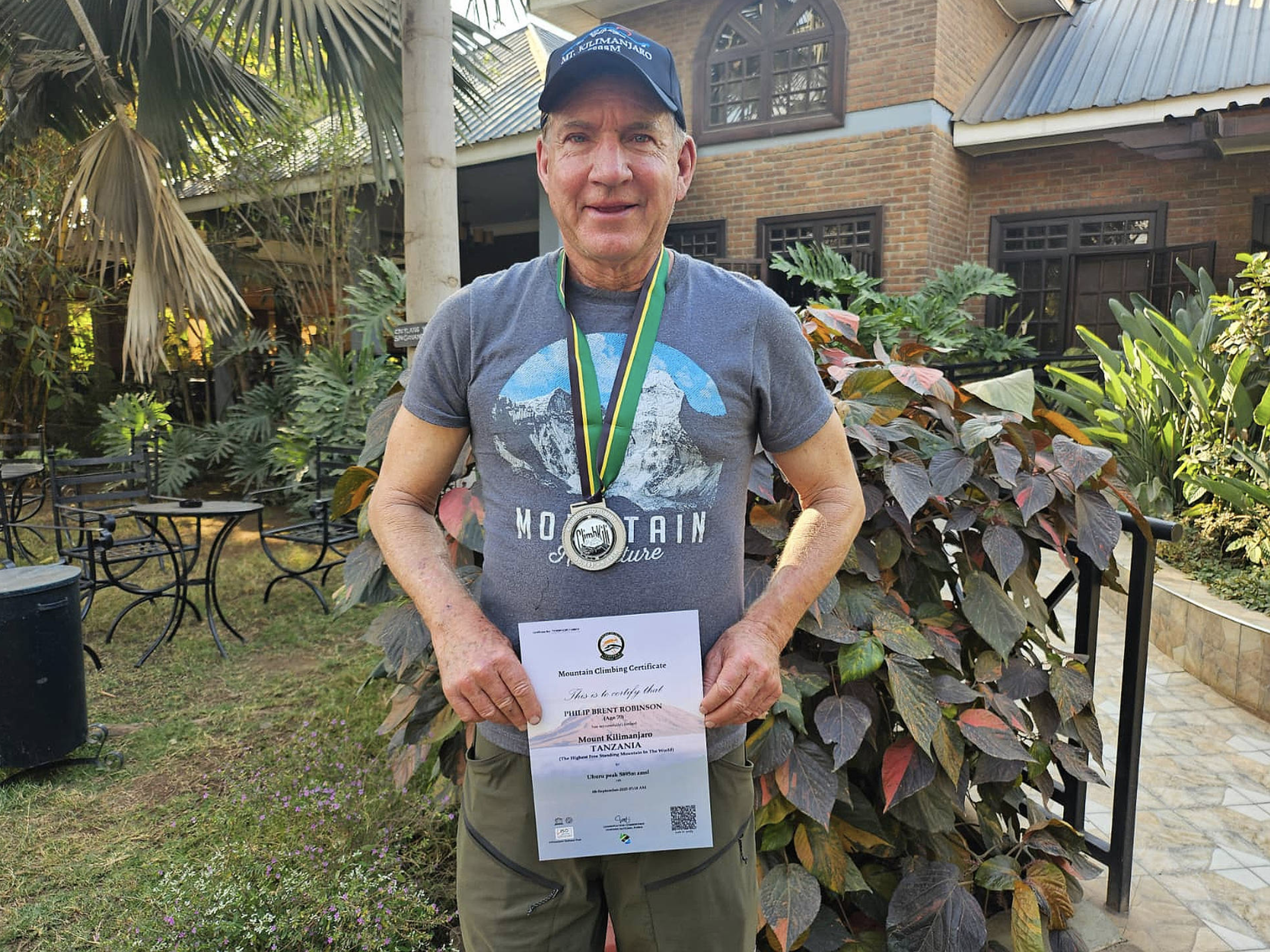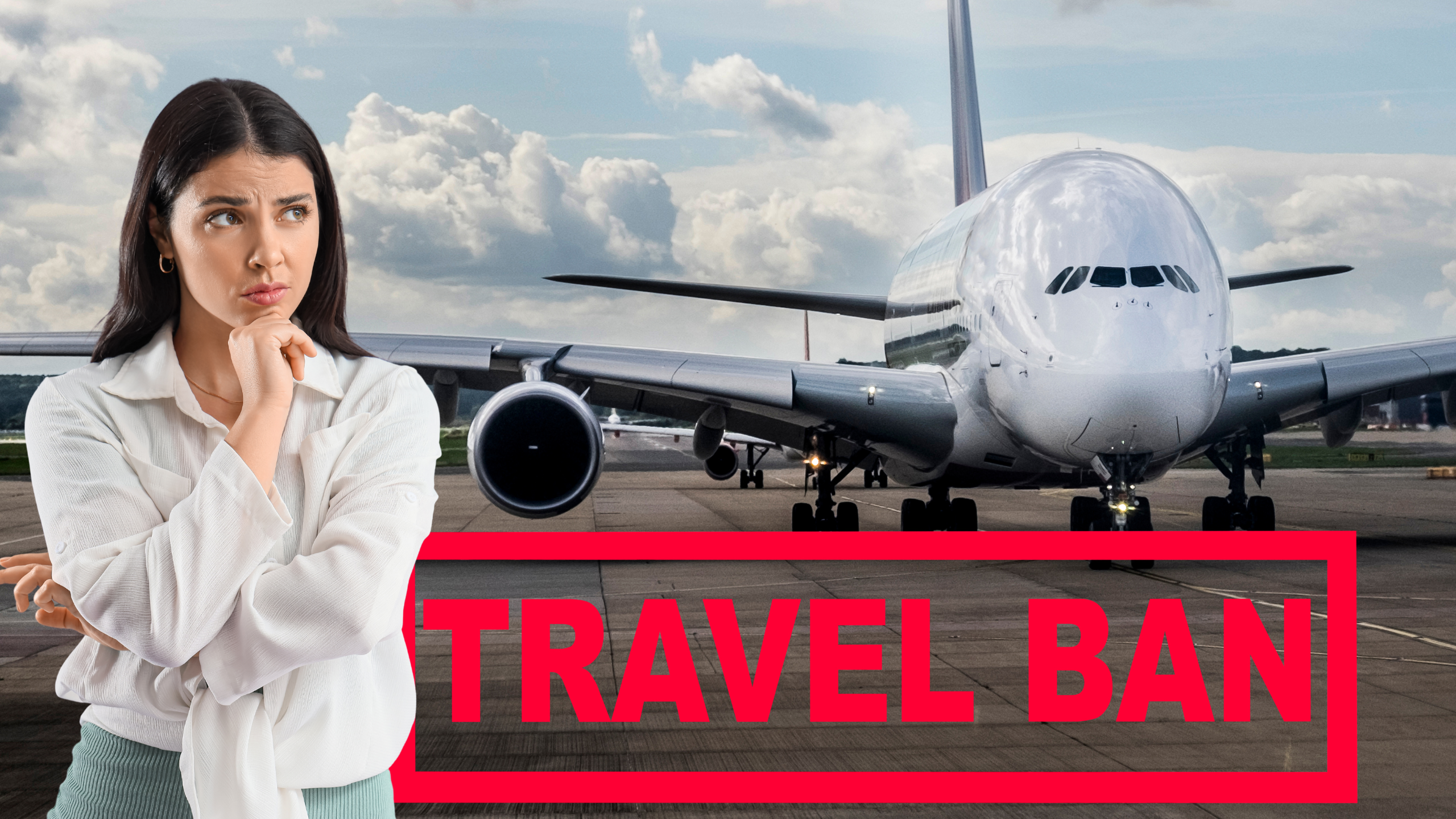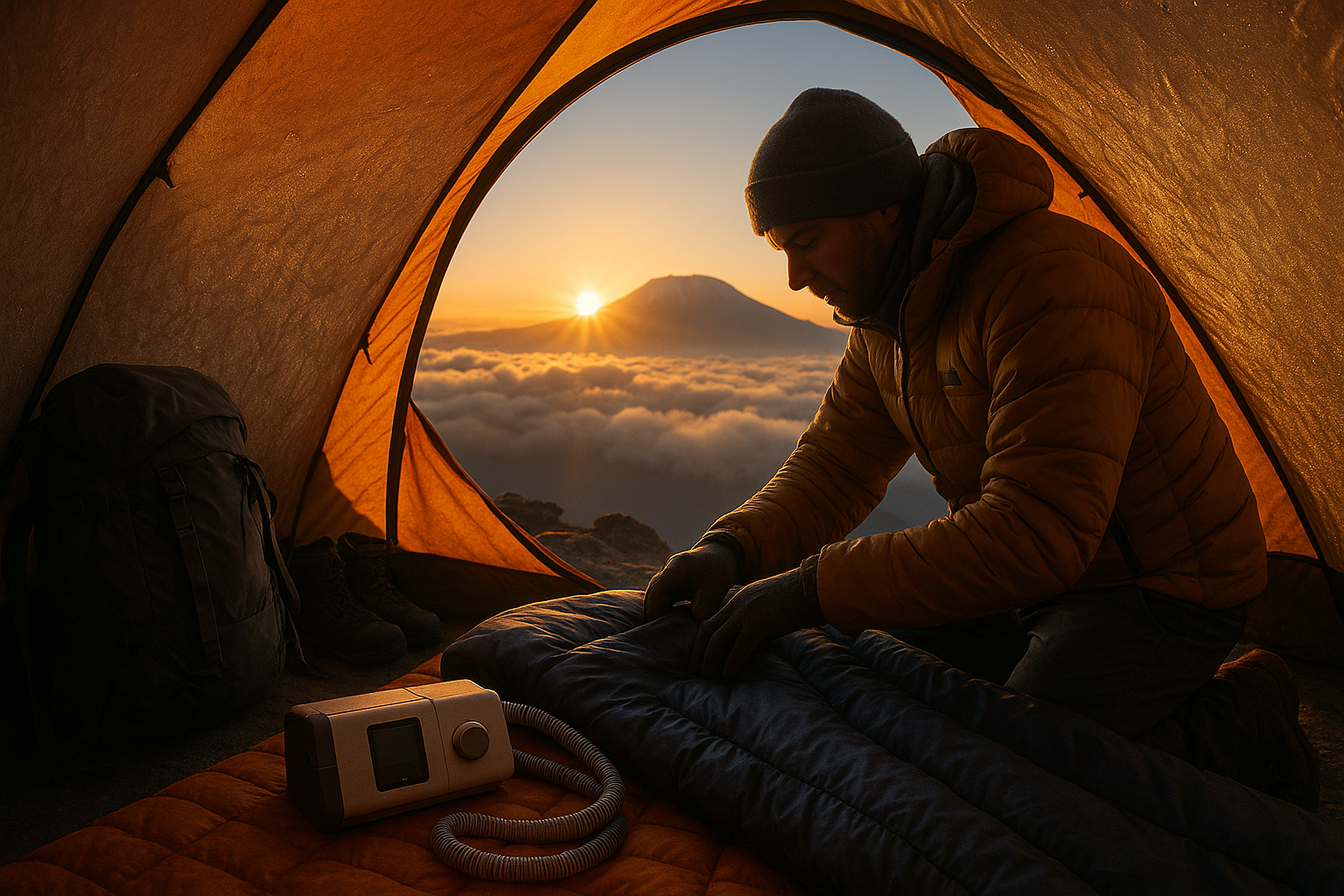Summit night on Kilimanjaro is the most physically and mentally demanding part of your climb, but it’s also the most rewarding. Reaching Uhuru Peak at 5,895 meters (19,341 feet) requires determination, preparation, and the right mindset. If you’re wondering what to expect on summit night of Kilimanjaro, this guide will walk you through every detail—from your midnight wake-up call to the moment you stand at the roof of Africa.
1. The Schedule: When and How the Climb Begins
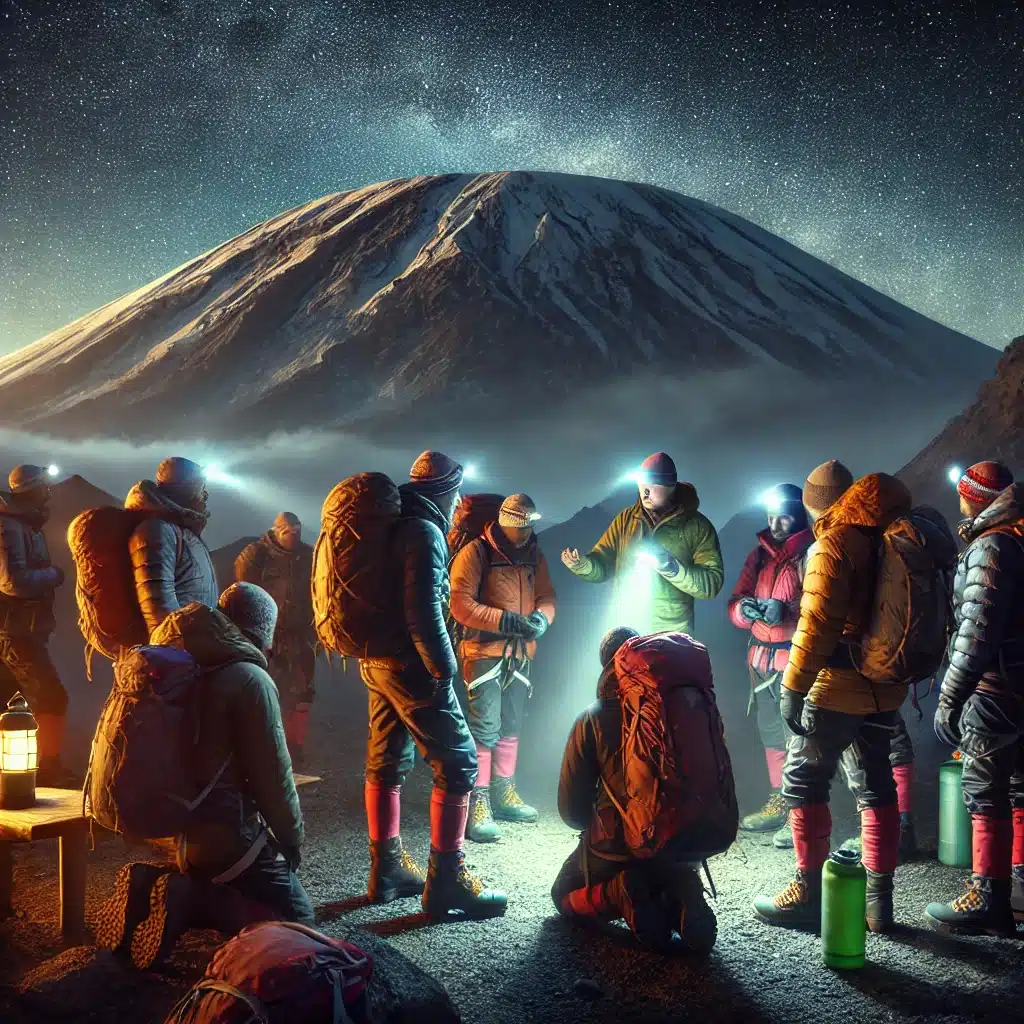
Unlike other trekking days, summit night starts just before midnight. Your guides will wake you around 11:00 PM to 12:00 AM for a hot drink and a light snack before gearing up for the final ascent.
- Why start at midnight? The goal is to reach Uhuru Peak at sunrise for stunning views and avoid the stronger afternoon winds.
- How long does it take? The climb to the summit typically takes 6-8 hours, and the descent back to base camp takes another 3-4 hours.
2. The Terrain: What You’ll Be Walking On
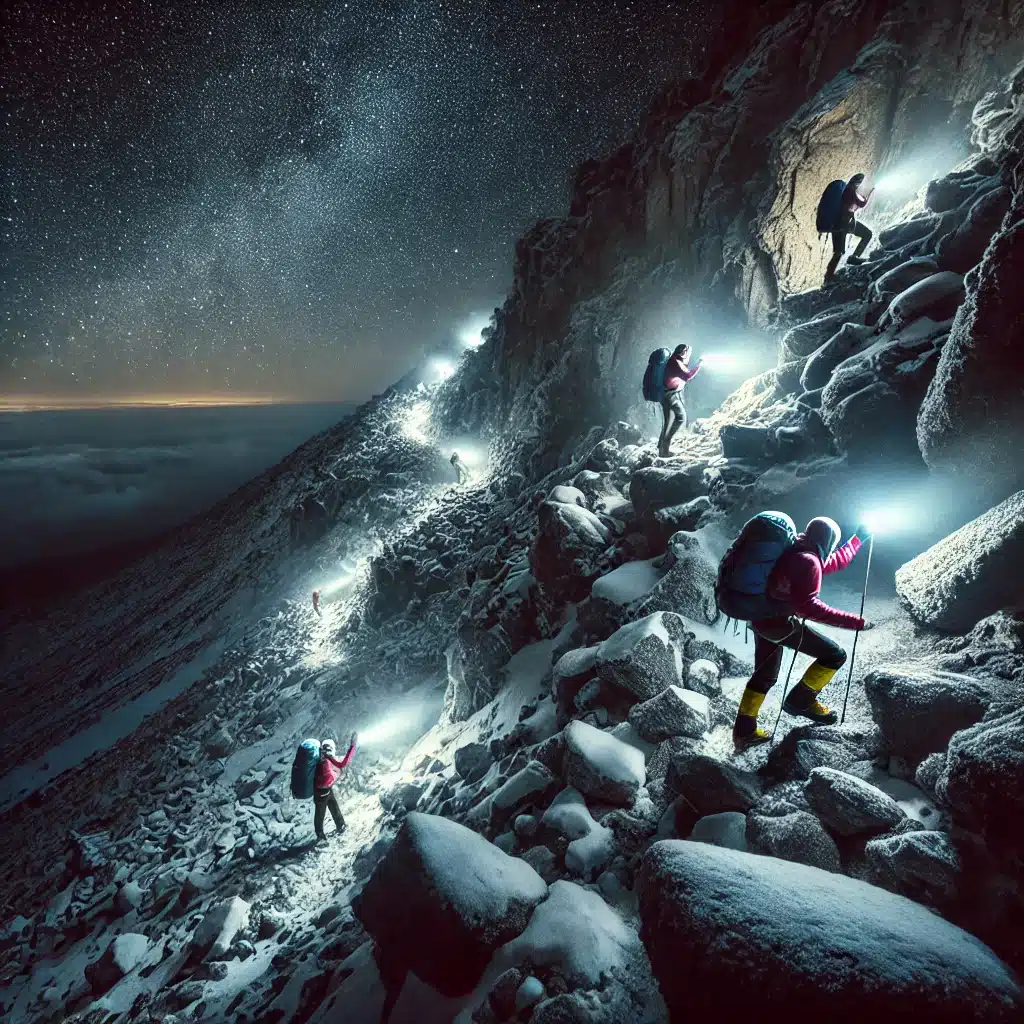
Summit night involves steep switchbacks on loose volcanic scree. As you gain altitude, the terrain becomes more challenging:
- First few hours: A slow, steady incline with zigzagging trails on loose scree.
- Near the crater rim: Expect icy patches and cold winds as you reach Stella Point (5,756m) or Gilman’s Point (5,685m).
- Final push to Uhuru Peak: A gradual but exhausting climb along the crater rim for another 1-2 hours.
3. The Weather: How Cold Does It Get?
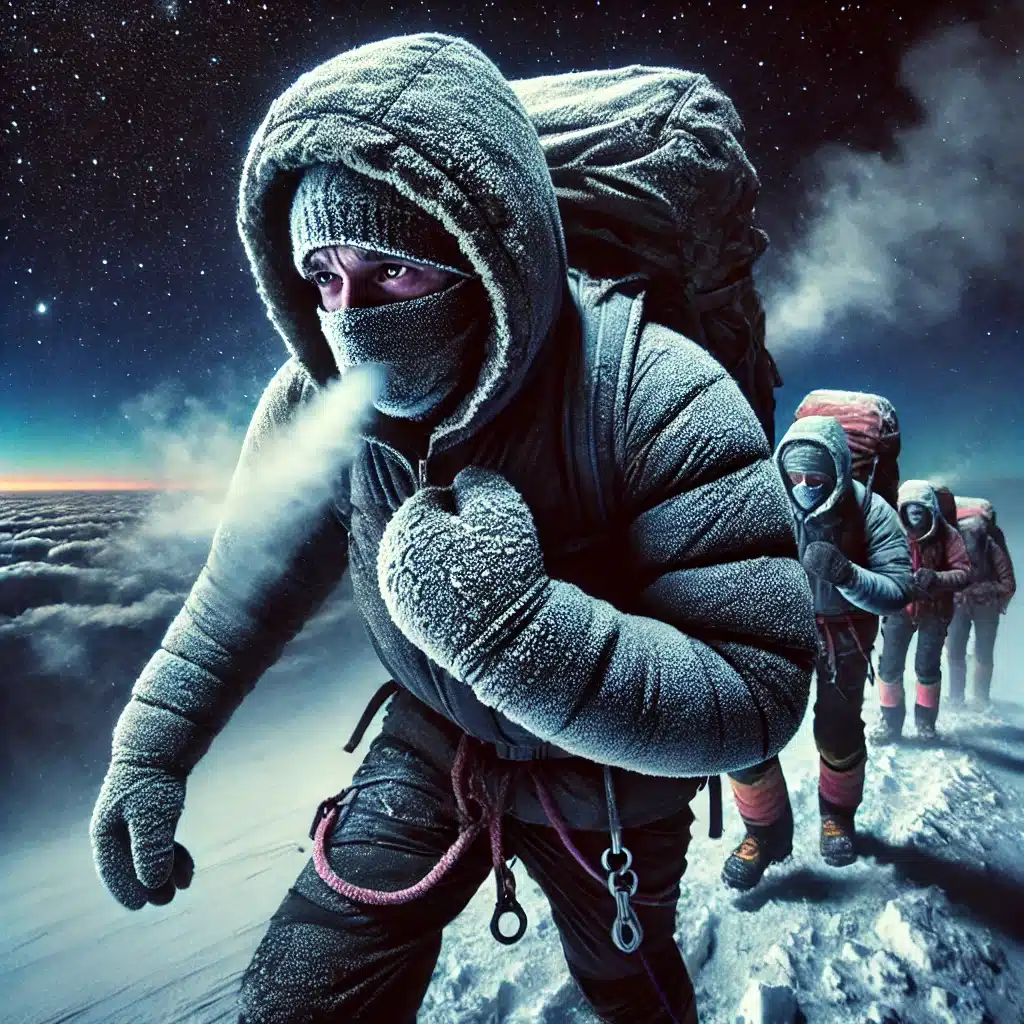
Temperatures on summit night are extremely cold, often dropping to -10°C to -20°C (14°F to -4°F). Windchill can make it feel even colder, so proper layering is essential:
- Base Layer: Moisture-wicking thermal wear.
- Mid Layer: Insulated fleece or down jacket.
- Outer Layer: Waterproof and windproof shell.
- Accessories: Warm gloves, a balaclava, and thermal socks.
4. The Altitude: How It Affects Your Body
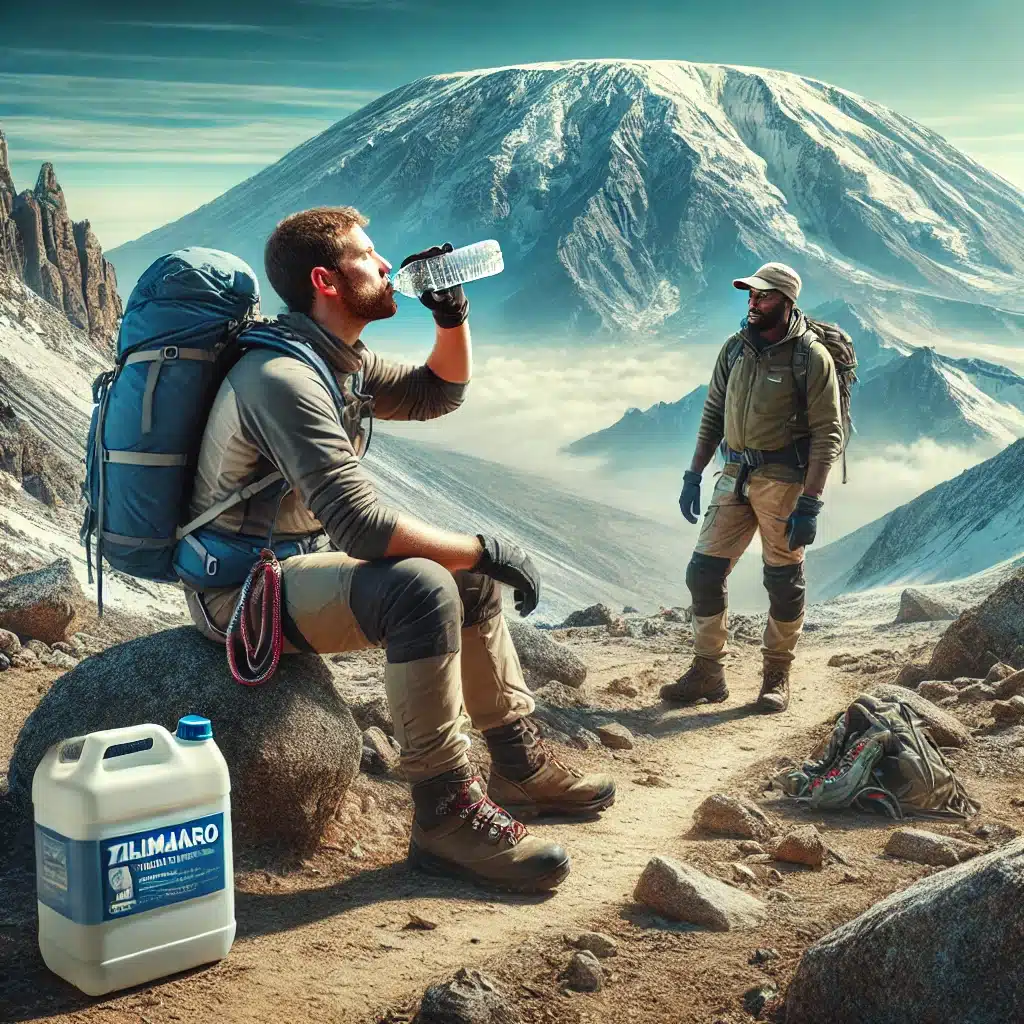
Summit night is when altitude sickness is most likely to affect climbers. Symptoms may include dizziness, headaches, nausea, and fatigue. To minimize risks:
- Hydrate frequently (even when you don’t feel thirsty).
- Maintain a slow, steady pace—guides will remind you to go “pole, pole” (slowly, slowly in Swahili).
- Listen to your body—if symptoms worsen, inform your guide immediately.
5. The Mental and Physical Challenge
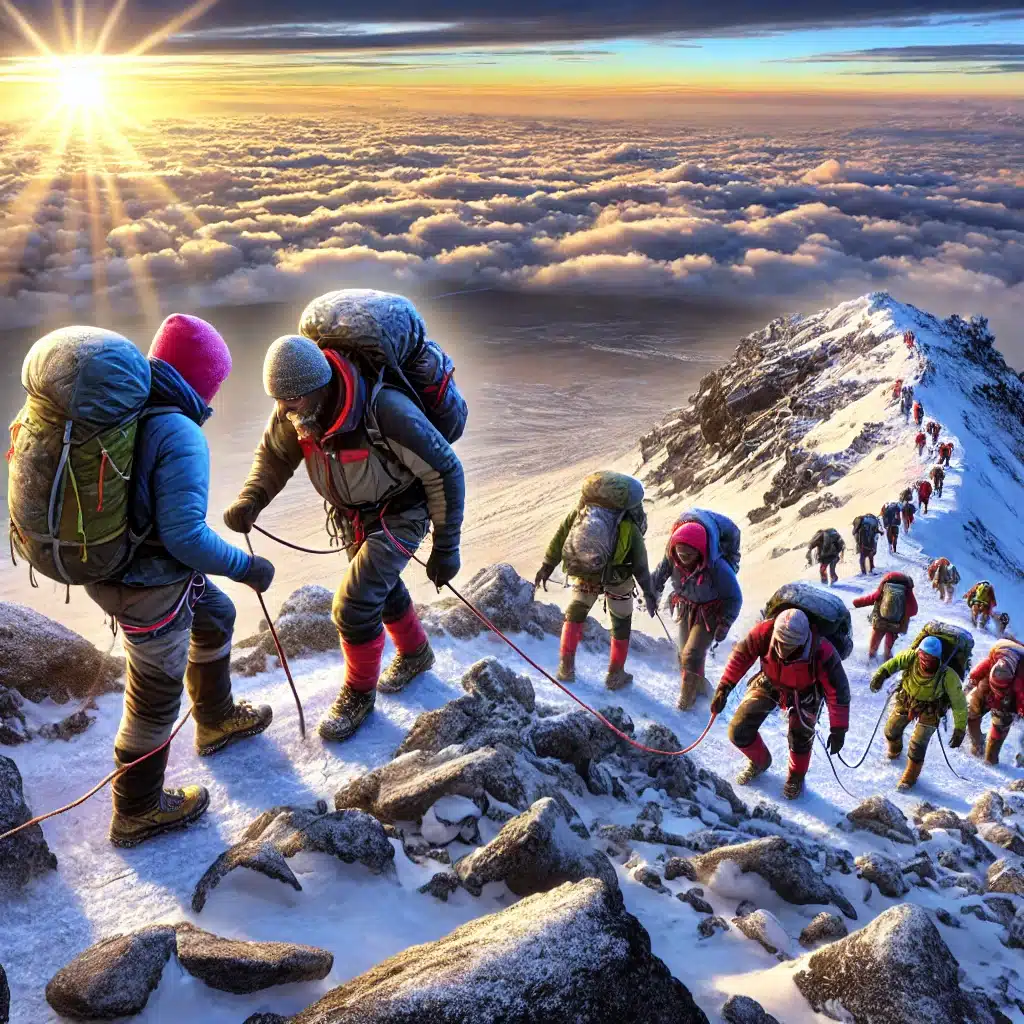
Many climbers describe summit night as the most mentally challenging part of the trek. Expect extreme fatigue, shortness of breath, and moments when you question whether you can continue.
- Mental toughness: Break the climb into sections—focus on reaching the next waypoint rather than thinking about the summit.
- Encouragement from guides: The Climb Kili team will be there to support you every step of the way.
- Sunrise Motivation: As the first rays of sunlight hit the horizon, you’ll find renewed strength for the final steps to Uhuru Peak.
6. The Summit: Arriving at Uhuru Peak
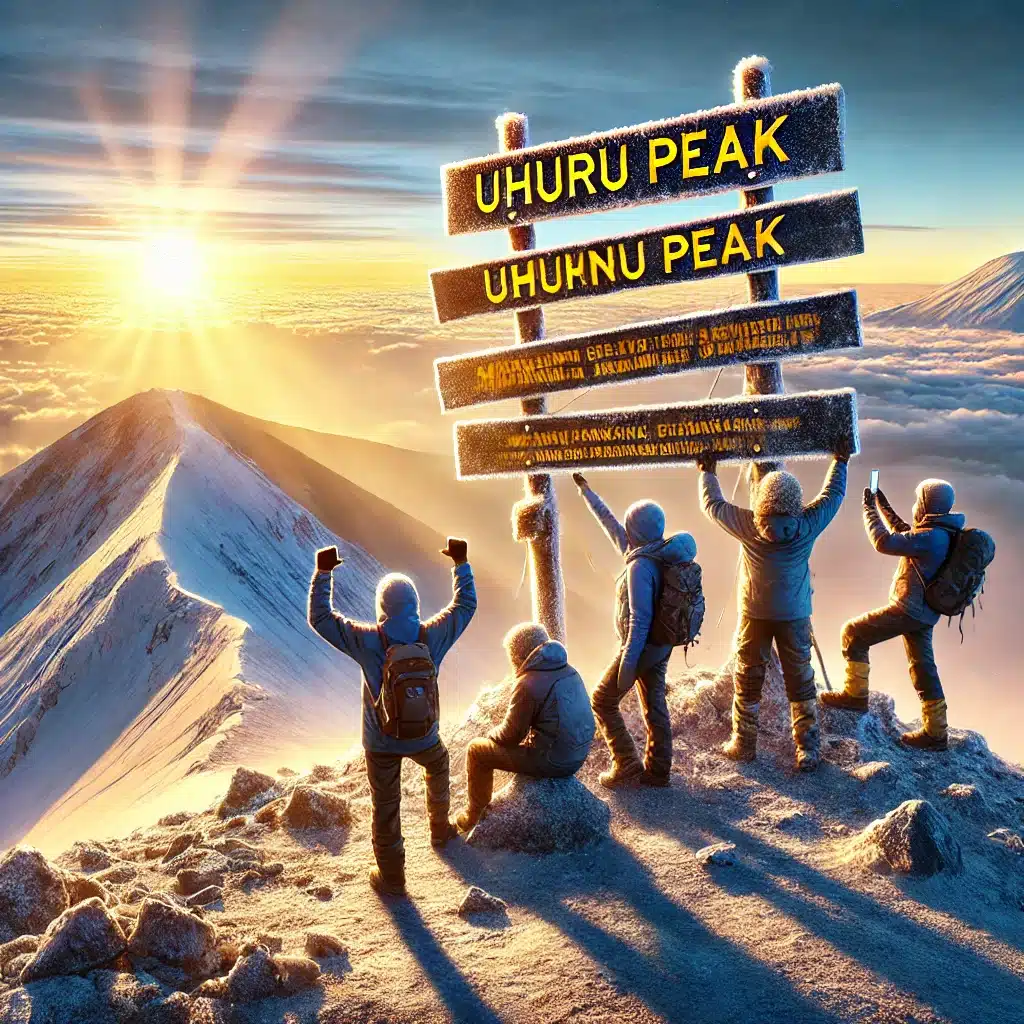
Reaching the summit of Kilimanjaro is a surreal and emotional moment. As you stand beside the famous Uhuru Peak sign, you’ll be rewarded with breathtaking panoramic views and an overwhelming sense of achievement.
- Photographs: Your guides will help capture this special moment.
- Short Celebration: Due to the extreme altitude and cold, climbers usually spend 10-15 minutes at the summit before beginning the descent.
7. The Descent: The Journey Back to Camp
Descending may seem easier, but it’s also exhausting. You’ll return to base camp for a short rest before continuing further down the mountain.
- Knee strain: The descent on loose scree can be tough on your joints—trekking poles are highly recommended.
- Quick Rest & Recovery: After a light meal and a nap at base camp, you’ll continue descending to lower altitudes where you can breathe easier and recover from the summit push.
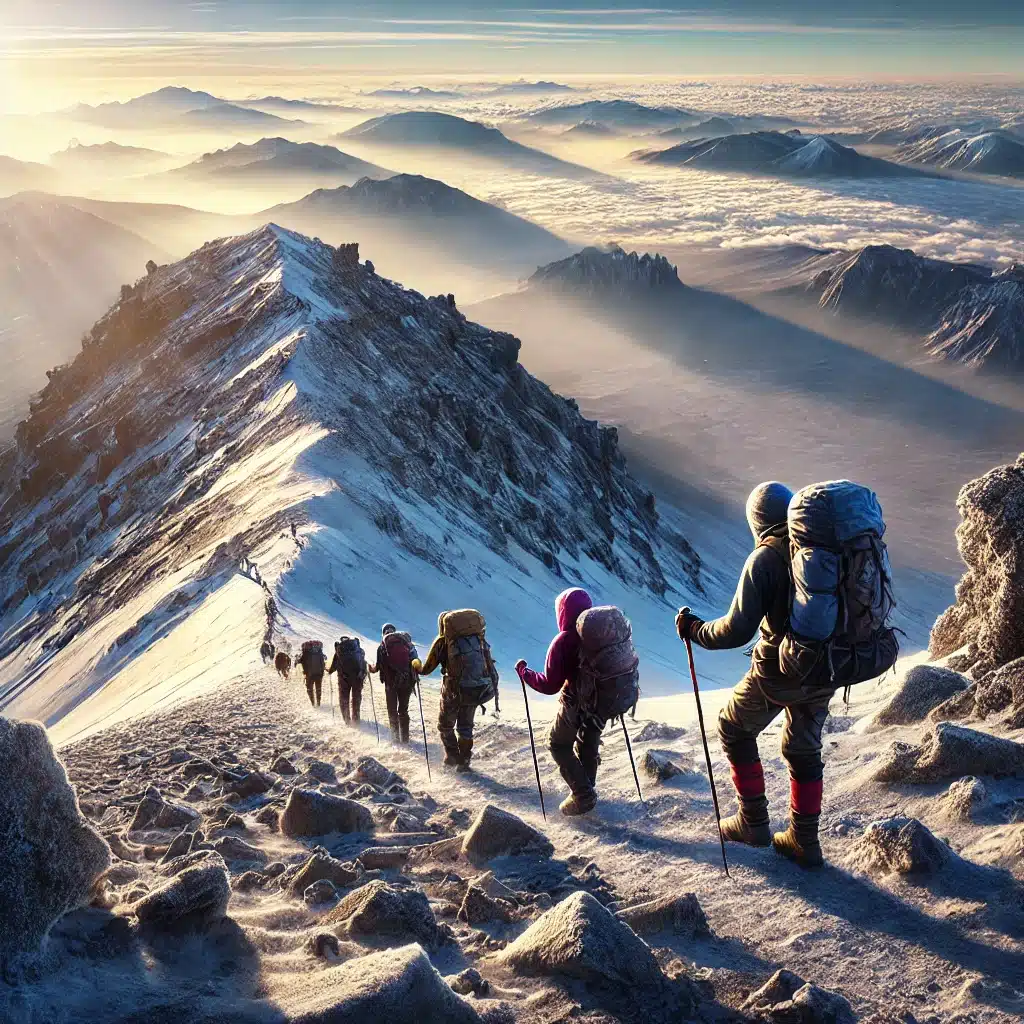
8. Packing Checklist for Summit Night
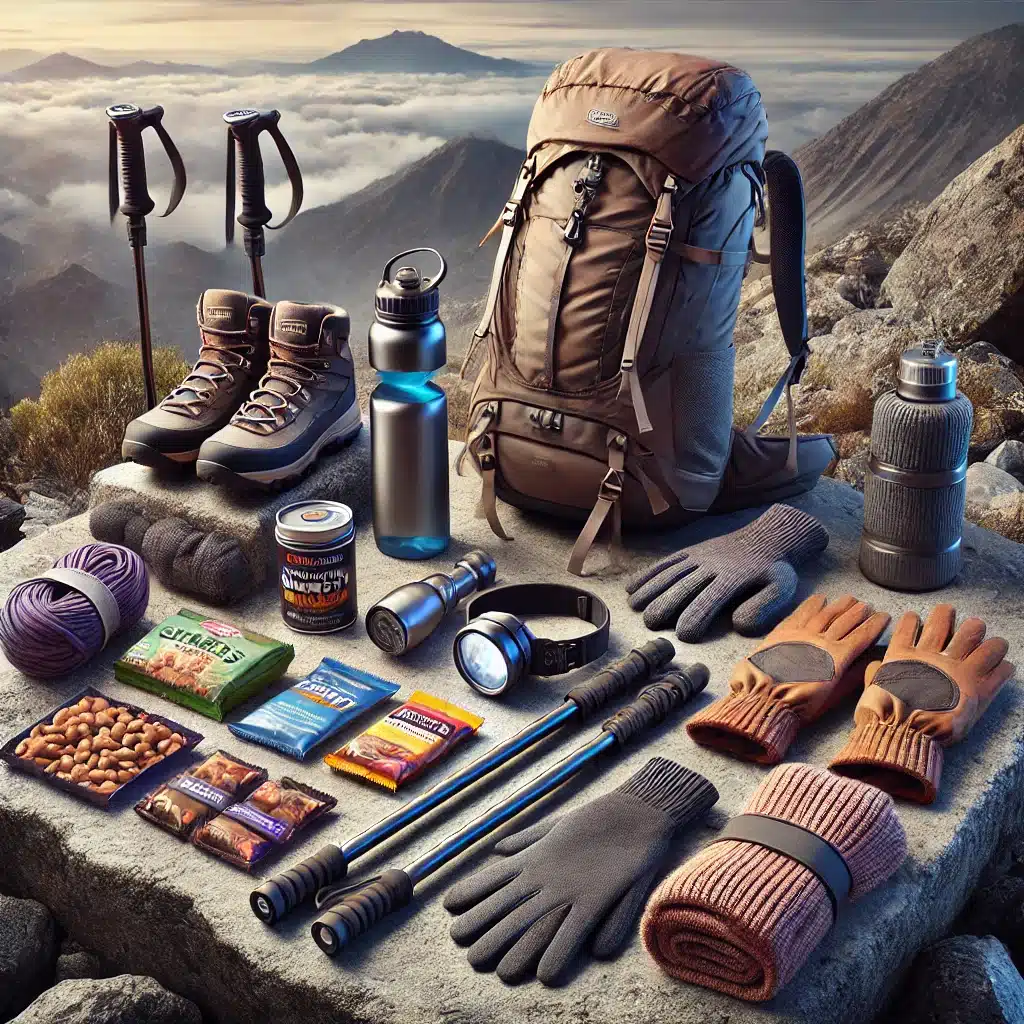
Make sure you have these essentials for summit night:
- Headlamp with extra batteries
- Trekking poles for stability
- High-energy snacks (nuts, dried fruit, energy bars)
- Insulated water bottle to prevent freezing
- Thermal gloves and a balaclava for warmth
- Extra layers for extreme temperatures
9. Real Climbers’ Experiences
Hearing from past climbers can provide motivation and insight. Here’s what one trekker had to say:
“Summit night was the hardest yet most rewarding experience of my life. When the sun rose over Kilimanjaro, all the fatigue disappeared. It was absolutely worth every step!” – Megan M., Climb Kili Trekker
10. Climb Kili Has a Kosovo Advantage
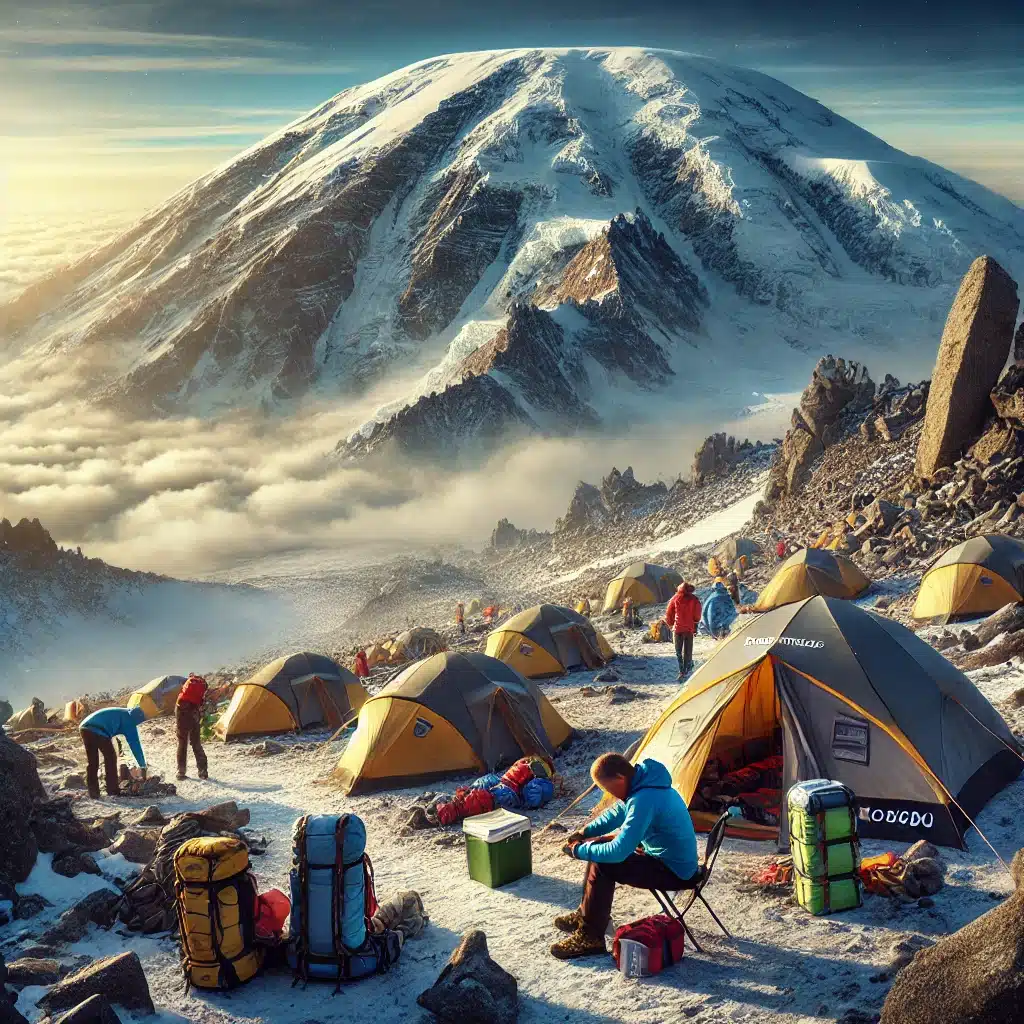
Climb Kili is proud to offer the Kosovo Route, a lesser-known yet highly rewarding approach to Kilimanjaro’s summit. This route provides a quieter, more scenic trek with less foot traffic and increased chances of successful acclimatization. Many climbers who take the Kosovo Route report a smoother ascent and a greater sense of solitude and adventure.
11. Final Thoughts: Your Summit Awaits
Summit night on Kilimanjaro is a grueling yet transformative experience. It will test your endurance, resilience, and determination—but standing atop Uhuru Peak makes every challenge worth it. With the right preparation, mindset, and support from expert guides, you can make your dream of reaching Africa’s highest summit a reality.

